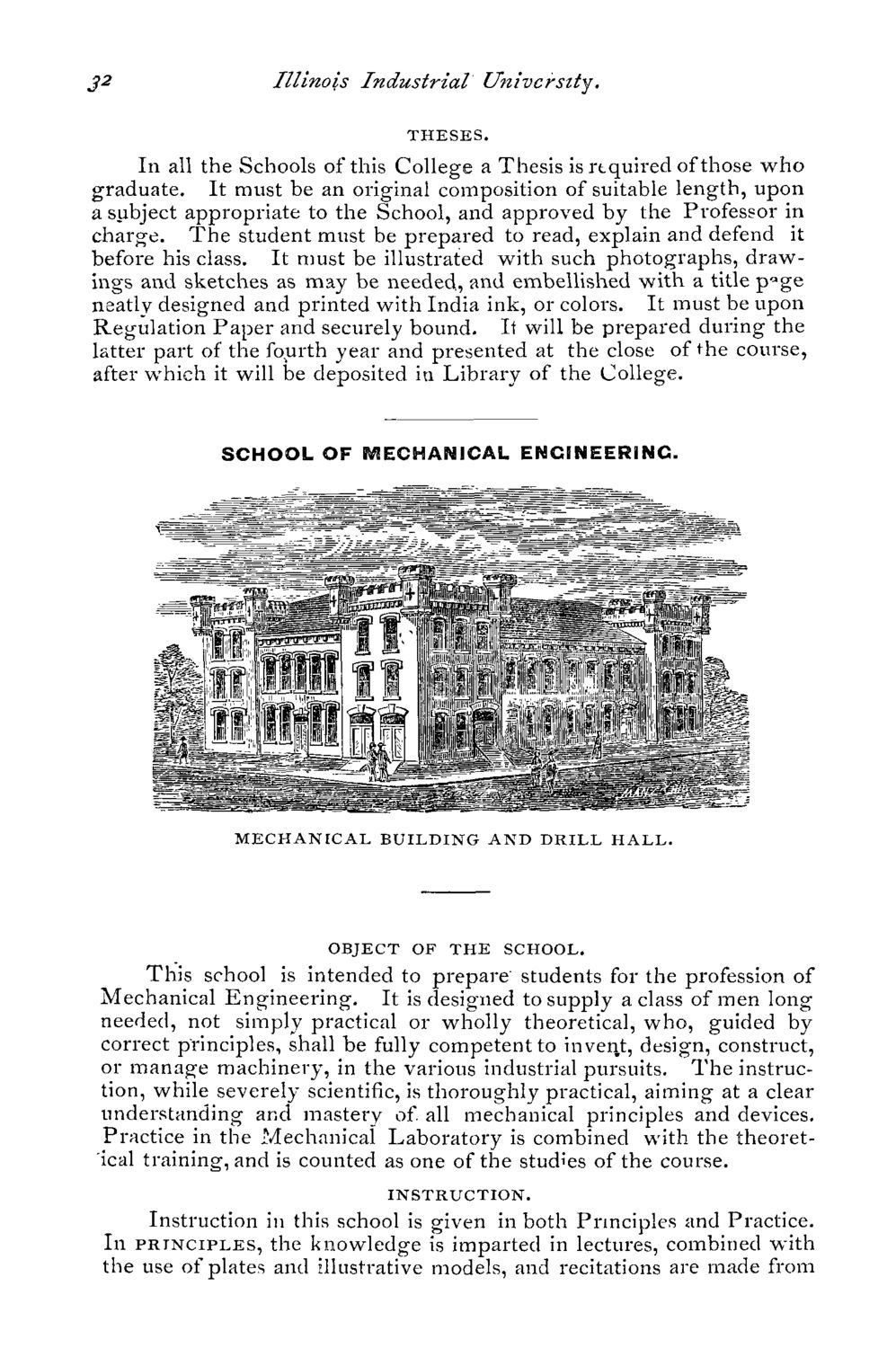| |
| |
Caption: Course Catalog - 1875-1876
This is a reduced-resolution page image for fast online browsing.

EXTRACTED TEXT FROM PAGE:
J2 Illinois Industrial University. THESES. In all the Schools of this College a Thesis is rtquired of those who graduate. It must be an original composition of suitable length, upon a subject appropriate to the School, and approved by the Professor in charge. The student must be prepared to read, explain and defend it before his class. It must be illustrated with such photographs, drawings and sketches as may be needed, and embellished with a title p°ge neatly designed and printed with India ink, or colors. It must be upon Regulation Paper and securely bound. It will be prepared during the latter part of the fourth year and presented at the close of the course, after which it will be deposited in Library of the College. SCHOOL OF MECHANICAL ENGINEERING. MECHANICAL BUILDING AND DRILL HALL. OBJECT OF THE SCHOOL. This school is intended to prepare students for the profession of Mechanical Engineering. It is designed to supply a class of men long needed, not simply practical or wholly theoretical, who, guided by correct principles, shall be fully competent to invent, design, construct, or manage machinery, in the various industrial pursuits. The instruction, while severely scientific, is thoroughly practical, aiming at a clear understanding and mastery of. all mechanical principles and devices. Practice in the Mechanical Laboratory is combined with the theoretical training, and is counted as one of the studies of the course. INSTRUCTION. Instruction in this school is given in both Principles and Practice. In PRINCIPLES, the knowledge is imparted in lectures, combined with the use of plates and illustrative models, and recitations are made from
| |